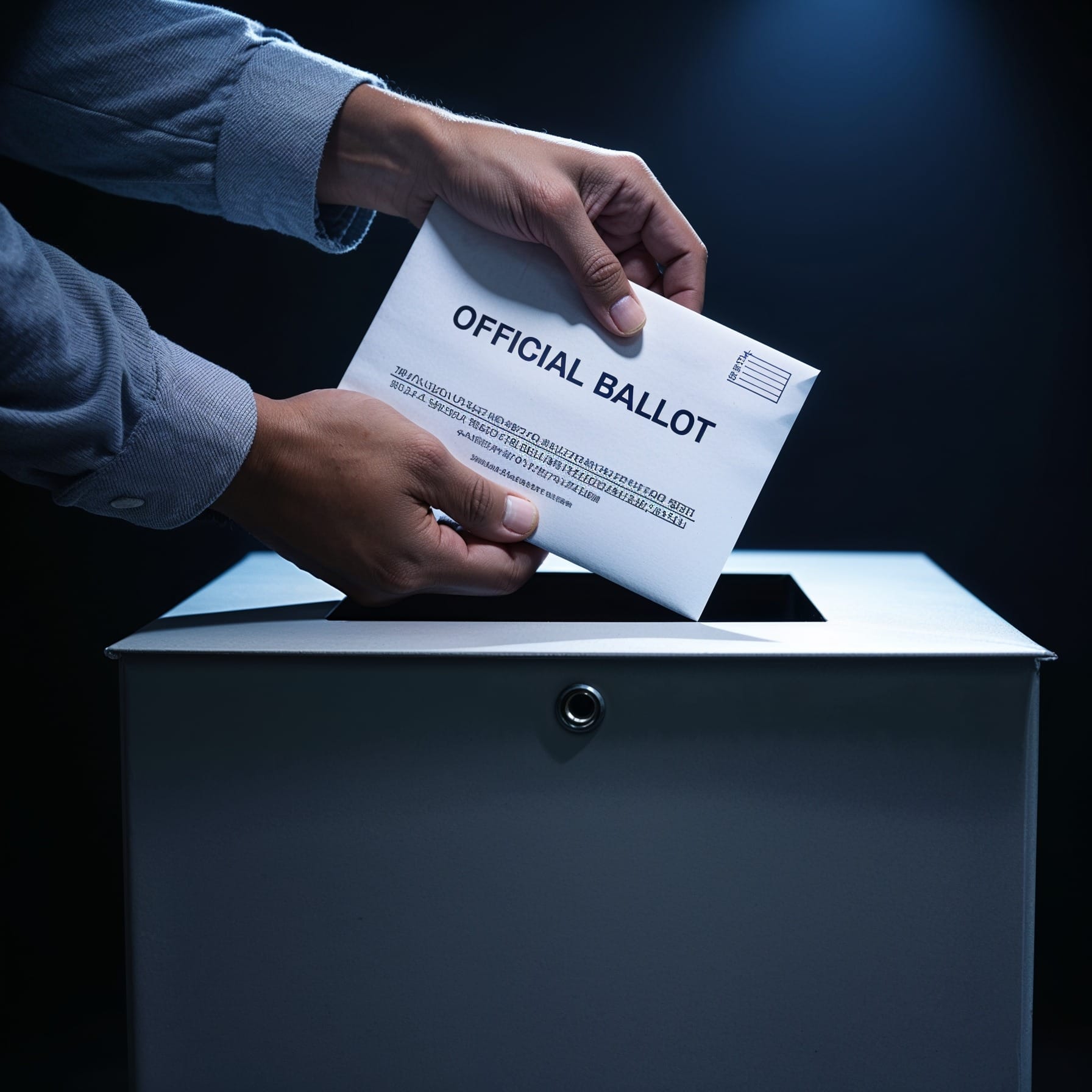
Exploring the security measures and risks associated with mail-in ballots in modern elections.
Mail-In Ballots and Election Fraud: A Deep Dive into Controversial Claims
In recent years, mail-in ballots have become a focal point in the heated debate surrounding election integrity. Proponents argue that they provide a secure and accessible way for citizens to exercise their democratic rights, while critics claim they open the door to widespread fraud. This article unpacks the origins of this controversy, examines the evidence and counterarguments, and explores the broader implications for democracy.
Origins of Mail-In Balloting Controversies
Mail-in voting, also known as absentee voting, has existed in various forms since the Civil War. Originally designed to allow soldiers to vote remotely, the system expanded over time to accommodate individuals unable to vote in person due to travel, illness, or disability. In the 21st century, several states implemented no-excuse absentee voting, allowing any registered voter to request a mail-in ballot.
The debate surrounding mail-in ballots intensified during the 2020 U.S. presidential election. Amid the COVID-19 pandemic, many states expanded mail-in voting to reduce in-person turnout at polling stations. This unprecedented shift led to claims of vulnerability in the system, with critics arguing that it increased the risk of fraud and errors.
Key Evidence and Claims of Fraud
1. Historical Concerns Over Fraud
Critics of mail-in voting often point to historical cases of voter fraud to bolster their claims. For example:
- In 1997, Miami’s mayoral election was overturned due to evidence of absentee ballot fraud.
- More recently, a 2018 congressional race in North Carolina faced scrutiny after operatives tampered with mail-in ballots.
While such cases are serious, they are isolated incidents. According to the Brennan Center for Justice, the rate of voter fraud in the U.S. is estimated to range between 0.0003% and 0.0025% of votes cast.
2. Security Vulnerabilities
Critics argue that mail-in voting creates opportunities for:
- Ballot Harvesting: The practice of third parties collecting and submitting mail-in ballots, which opponents claim can lead to coercion or tampering. Concerns are particularly acute regarding ballot harvesting in nursing homes, where elderly residents may face pressure or manipulation. Anecdotal reports from voters suggest that some residents in care facilities have had their ballots handled without proper oversight.
- Lost or Delayed Ballots: Instances where ballots are misplaced or arrive too late to be counted.
- Forgery and Fraudulent Ballots: Concerns that bad actors could forge signatures or submit counterfeit ballots.
3. High-Profile and Recent Cases
Recent elections have witnessed isolated incidents of mail-in voting fraud:
- In Colorado (2024), approximately a dozen mail ballots were stolen and fraudulently submitted. Signature verification processes detected the discrepancies, though three fraudulent ballots were initially accepted.
- In North Carolina’s 2018 congressional race, political operatives manipulated absentee ballots to alter the outcome. This led to an unprecedented re-election.
- In the Saxony state election in Germany (2024), 111 mail ballots were tampered with to favor a political party, leading to arrests after irregularities were flagged.
These cases, while serious, highlight the effectiveness of detection mechanisms in preventing widespread fraud.
Counterarguments and Debunking Fraud Claims
1. Safeguards in Mail-In Voting
Election officials implement numerous measures to ensure the integrity of mail-in voting, including:
- Signature Verification: Voter signatures on mail-in ballots are matched against those on file.
- Unique Ballot IDs: Each mail-in ballot has a unique identifier to prevent duplication.
- Chain of Custody Protocols: Strict procedures govern the handling of ballots from voters to counting centers.
2. Evidence Supporting Security
Studies and audits consistently show that mail-in voting is secure. A 2020 study by Stanford University found no significant evidence that mail-in voting benefits one party over another or leads to increased fraud. Additionally, states with extensive mail-in voting, such as Oregon and Colorado, report high levels of voter satisfaction and minimal fraud.
3. Judicial and Expert Opinions
Courts have repeatedly dismissed lawsuits alleging widespread fraud in mail-in voting due to a lack of evidence. Furthermore, bipartisan commissions, including the Presidential Commission on Election Administration, have endorsed mail-in voting as a secure and effective method of participation.
Broader Implications on Democracy
1. Expanding Voter Access
Mail-in voting increases accessibility for marginalized groups, including:
- Elderly voters and those with disabilities.
- Citizens living in remote or rural areas.
- Voters unable to take time off work on Election Day.
By removing barriers, mail-in voting helps ensure broader representation in elections.
2. Erosion of Trust in Elections
The politicization of mail-in voting risks undermining public confidence in electoral outcomes. Misinformation and unsubstantiated claims of fraud can lead to voter disenfranchisement and decreased turnout. The disparity in voter enthusiasm and turnout patterns, particularly seen in the comparison between Joe Biden’s vote counts in 2020 and subsequent Democratic candidates like Kamala Harris or Barack Obama, often fuels skepticism and conspiracy theories. Understanding these discrepancies requires context, such as differences in voter engagement, election dynamics, and national crises.
3. The Role of Media and Misinformation
Media outlets and social platforms play a significant role in shaping perceptions of mail-in voting. Sensationalized coverage of isolated incidents can amplify fears and distort public understanding of the issue. Combating misinformation requires transparency and public education about how mail-in voting works.
The Future of Mail-In Voting
As technology advances, the future of mail-in voting may include:
- Blockchain Voting: A secure and transparent system leveraging blockchain technology to verify and count votes.
- Enhanced Tracking Systems: Allowing voters to track their ballots from submission to counting.
- Standardized Procedures: Nationwide guidelines for mail-in voting to reduce variability and confusion.
To ensure the success and integrity of mail-in voting, policymakers must balance accessibility with robust security measures. Public trust will depend on the transparency and accountability of election processes.
Conclusion
Mail-in voting is a cornerstone of democratic participation, particularly during times of crisis. While concerns over fraud are not unfounded, evidence overwhelmingly shows that the risks are minimal and manageable. By addressing vulnerabilities and countering misinformation, election officials can uphold the integrity of mail-in voting and ensure that every citizen’s voice is heard.
DARWIN’s Take
In a landscape where trust in democratic processes feels as fragile as ever, mail-in voting stands at the crossroads of convenience and scrutiny. The rare but real instances of fraud, amplified by logistical lapses and partisan pressures, reveal cracks in the system that cast long shadows on public perception.
But the real threat might not lie in widespread fraud, as data suggests it’s exceptionally rare. Rather, it’s the murky gaps—the overlooked ballot, the mismatched signature, the misplaced vote—that open doors to questions of legitimacy. What’s unsettling isn’t a clear, coordinated fraud but a system whose imperfections allow doubts to breed. How long before we witness a turning point where democracy itself stands trial in the court of public opinion?
As we look toward future elections, the challenge will be whether security and accessibility can coexist without sacrificing one for the other. Where will we find the balance between a process that’s accessible and one that’s as unbreakable as the trust we place in it? It’s a question that won’t settle easily—and maybe, it shouldn’t.
Recommended Reading on Paranoid Prophet
Explore these related articles from our Politics category to dive deeper into the themes of national division and political dynamics in the U.S.:
- Trump’s Rally Record: How His Campaigns Stack Up Against Other U.S. Politicians’ Rallies
Discover how political rallies shape public opinion and contribute to national unity or division. - What to Expect: Trump’s Likely Moves from Election Win to Inauguration
Analyze the strategies and implications of political maneuvers during transitional periods. - Trump Tariffs for Mexico and Canada
Explore the economic and political impacts of Trump’s proposed 25% tariffs on Mexico and Canada. Learn how these tariffs could reshape trade dynamics, pricing, and North American manufacturing. - Matt Gaetz Human Trafficking Allegations: Media Smear Campaign or Manufactured Scandal?
Investigate the human trafficking allegations against Matt Gaetz, exploring whether they constitute a media smear campaign or a manufactured scandal. - RFK Jr.: A Game-Changing Nominee for Secretary of Health and Human Services
Examine the potential impact of RFK Jr.’s nomination as Secretary of Health and Human Services, considering his views on public health and policy reform. - Why America Needs a Department of Government Efficiency—and Why Elon Musk Should Lead It
Discuss the necessity of a Department of Government Efficiency in the U.S. and propose Elon Musk as a visionary leader to spearhead governmental innovation. - Mail-In Ballots and Election Fraud: Risks, Safeguards, and 2024 Concerns
Investigating how electoral policies affect national trust, including how they intersect with issues affecting the military and veterans.
Sources
- Snopes – Do Mail-In Ballots Increase Risk of Voter Fraud?
An analysis debunking the myth that mail-in voting leads to widespread voter fraud, providing evidence and expert opinions. - Snopes
- Brennan Center for Justice – Mail Ballot Security Features: A Primer
An overview of security measures implemented to protect mail-in voting, ensuring election integrity. - Brennan Center for Justice
- The Heritage Foundation – Four Stolen Elections: The Vulnerabilities of Absentee and Mail-In Ballots
A report highlighting cases where mail-in ballots were involved in election fraud, discussing potential vulnerabilities. - Heritage Foundation
- Caltech Science Exchange – How Does Voting by Mail Work?
An explanation of the mail-in voting process and the security measures in place to protect it. - Science Exchange
- Brookings – Low rates of fraud in vote-by-mail states show the benefits outweigh the risks
A study indicating that states with vote-by-mail systems experience minimal fraud, suggesting the advantages surpass the potential risks. - Brookings
Comprehensive FAQ: Mail-In Voting and Election Fraud
General Questions
1. What is mail-in voting and how does it work? Mail-in voting allows registered voters to cast their ballots by mail. Voters receive ballots via postal service, complete them, and send them back to election offices for processing and counting.
2. Are mail-in ballots the same as absentee ballots? Yes, but with slight differences. Absentee ballots typically require voters to provide a specific reason for not voting in person, while mail-in ballots in some states are available to all voters without an excuse.
3. How are mail-in ballots verified? Election officials verify signatures on mail-in ballots by comparing them to voter registration records. Some jurisdictions also use unique identifiers and barcodes to track ballots.
4. Can anyone request a mail-in ballot? This depends on state laws. Some states allow universal mail-in voting, while others require voters to meet specific criteria.
5. How do I know my mail-in ballot was counted? Many states provide ballot tracking systems, allowing voters to confirm their ballots were received and counted.
Concerns About Fraud
6. Is mail-in voting more prone to fraud than in-person voting? Studies show mail-in voting has a low fraud rate, comparable to in-person voting. Security measures like signature verification mitigate risks.
7. What is ballot harvesting and is it legal? Ballot harvesting involves third parties collecting and submitting mail-in ballots. Its legality varies by state, with some allowing it under strict conditions and others banning it outright.
8. Have there been cases of fraud involving mail-in ballots? Yes, but these cases are rare. For example, the 2018 North Carolina congressional race involved absentee ballot tampering, which led to a re-election.
9. How are fraudulent mail-in ballots detected? Election officials use signature matching, ballot tracking, and other safeguards to identify and reject fraudulent ballots.
10. Can someone forge my signature on a mail-in ballot? Forgery is possible but difficult to execute on a large scale. Officials verify signatures, and discrepancies are flagged for further review.
Security Measures
11. What steps are taken to secure mail-in voting? Security measures include signature verification, unique ballot barcodes, chain of custody protocols, and tracking systems.
12. Are mail-in ballots more likely to get lost? While lost ballots can occur, their number is minimal compared to the total ballots cast. Voters can use tracking systems to monitor their ballots.
13. How are mail-in ballots stored and counted? Mail-in ballots are securely stored in tamper-evident containers until they are processed and counted under strict supervision.
14. Can hackers interfere with mail-in voting? Mail-in voting is less vulnerable to hacking than electronic systems. The primary risks involve physical tampering, which is easier to detect.
15. What happens if a voter receives multiple ballots? Duplicate ballots are flagged by election systems, which only count the first valid ballot submitted by the voter.
Accessibility and Impact
16. Who benefits most from mail-in voting? Mail-in voting benefits voters who face barriers to in-person voting, such as elderly individuals, disabled citizens, or those living in remote areas.
17. Does mail-in voting increase voter turnout? Studies indicate that mail-in voting can modestly increase turnout, particularly in lower-profile elections.
18. Do mail-in ballots favor one political party over another? Research shows no consistent partisan advantage. Outcomes depend on voter demographics and engagement levels.
19. How does mail-in voting affect election timelines? Mail-in voting can extend the time needed to count ballots, especially in close races, as officials verify and process mailed votes.
20. Is mail-in voting used outside the United States? Yes, several countries use mail-in voting systems, including Germany, Switzerland, and Australia, often with similar security protocols.
Controversies and Misinformation
21. Why is mail-in voting controversial? Critics argue that mail-in voting increases fraud risk and delays results, while supporters highlight its accessibility and security.
22. What role does misinformation play in mail-in voting debates? Misinformation about fraud and ballot tampering erodes public trust. Clear communication from election officials is vital to counteract these narratives.
23. Have there been large-scale fraud cases involving mail-in ballots? No credible evidence supports claims of large-scale fraud. Most documented cases involve isolated incidents affecting a small number of ballots.
24. How do media reports influence perceptions of mail-in voting? Sensationalized coverage of rare fraud cases can distort public understanding, emphasizing risks over benefits.
25. What is the future of mail-in voting? The future likely includes enhanced tracking, nationwide standards, and potential integration of secure technologies like blockchain to improve transparency and trust.


